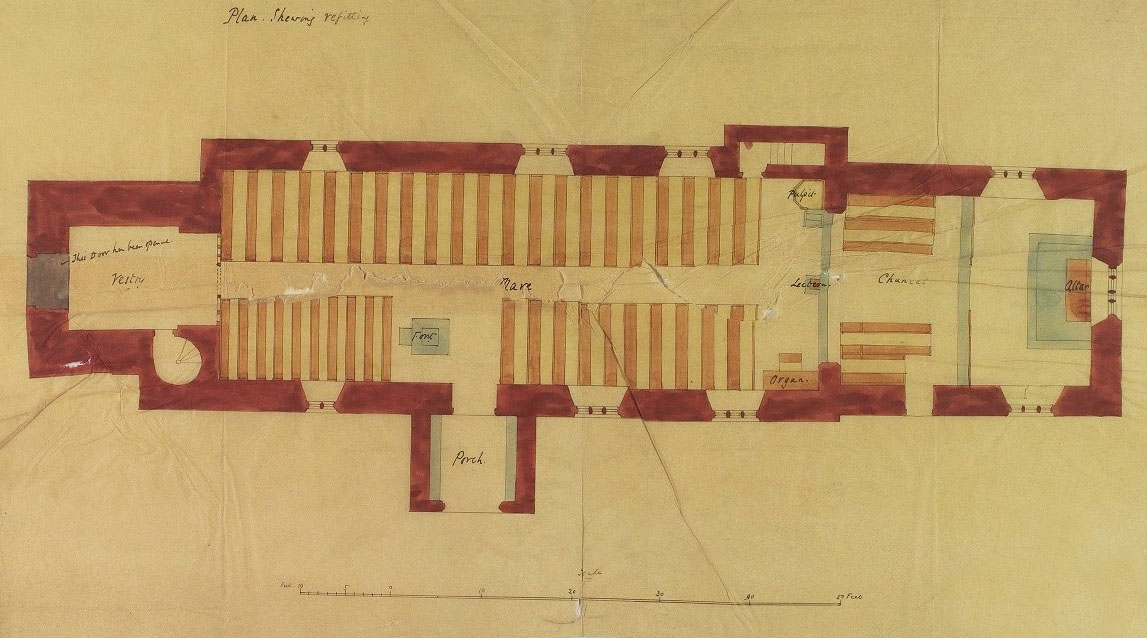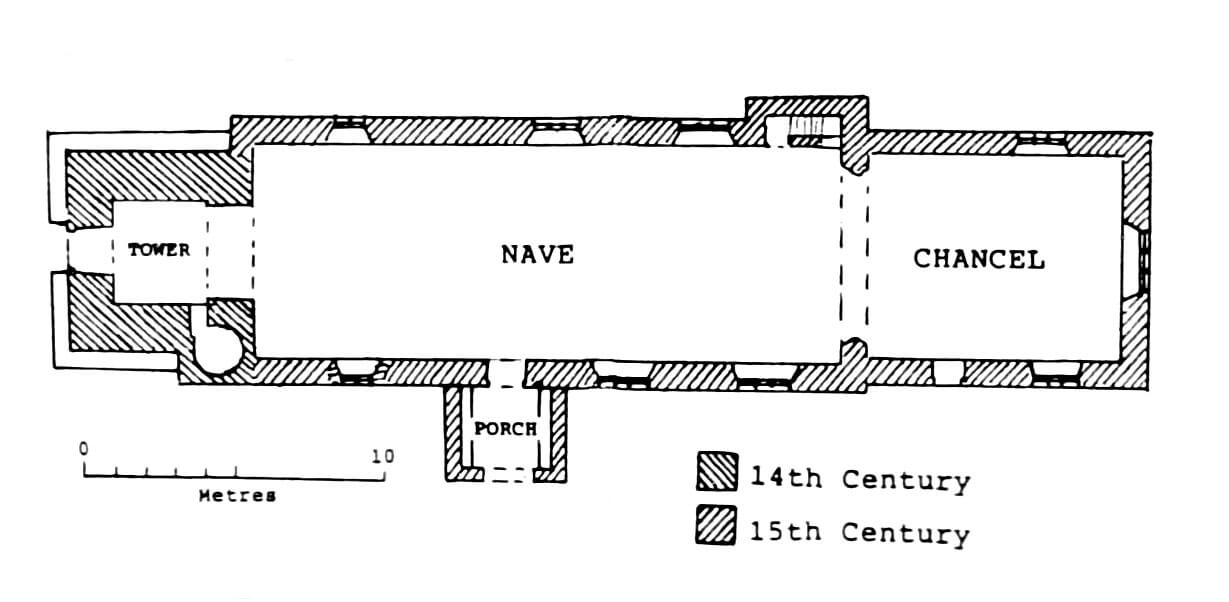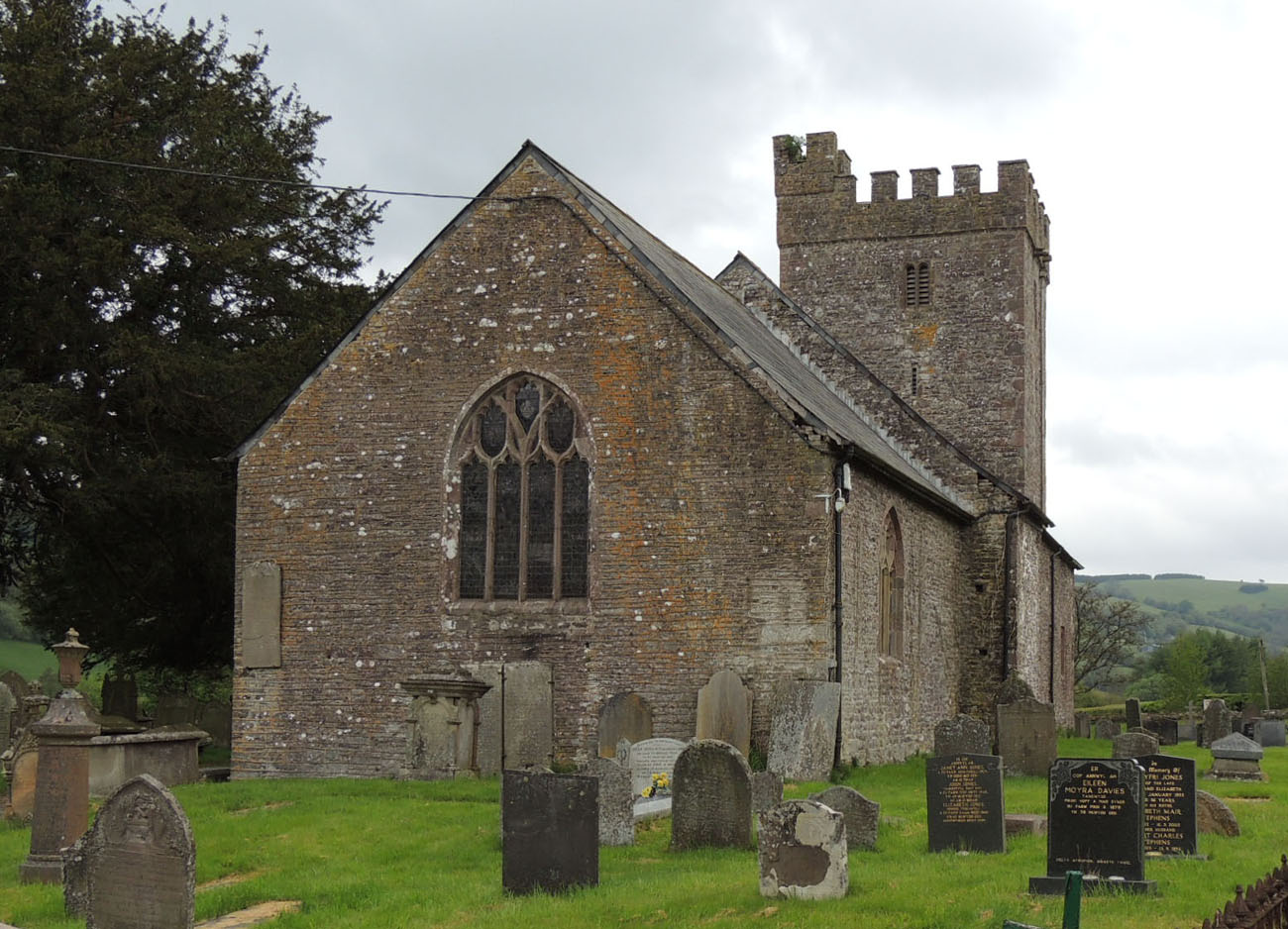History
The present church of St. David in Llywel comes from the fifteenth century, although its origins may be much earlier, as indicated by, among other, preserved early medieval font. The original parish church was founded by Saint Llywel and was consecrated to David, Padarin and Teilo, which gave origin to the alternative name of Llantrisant (Three Saints). The chronicler Gerald of Wales noted the fire of the Llywel temple in the 12th century. The nave and chancel of today’s structure was erected around 1480, the tower perhaps even in the fourteenth century, but it was rebuilt in the next century. In the 16th century, the porch was added. The church was restored in 1869 and in the years 1877-1878.
Architecture
At the end of the Middle Ages, the church consisted of a rectangular, much elongated nave, a slightly narrower, also rectangular chancel on the eastern side, a tower on the west side and a porch erected at the entrance in the southern wall of the nave. The four-sided tower was crowned with a parapet and battlement protruding slightly in front of the face of the walls on a cordon cornice. From the south-eastern side it received a turret with a staircase. The nave in the north-eastern part was provided with a shallow projection, which once housed a stairs to the rood loft balcony, which no longer exists.
Current state
The church in Llywel boasts a very small number of changes introduced in the 19th century and a preserved late Gothic silhouette and architectural details. Inside you can see two stones from the 5th-6th century with ogham and Latin inscriptions (currently there is a copy of one of them in the church and the original is in the British Museum) and stocks from the end of the 18th century.
bibliography:
Salter M., The old parish churches of Mid-Wales, Malvern 1997.
Website britainexpress.com, Llywel, St David’s Church.
Website coflein.gov.uk, St David’s church, St Teilo’s church, Llywel or Llantrisant.



